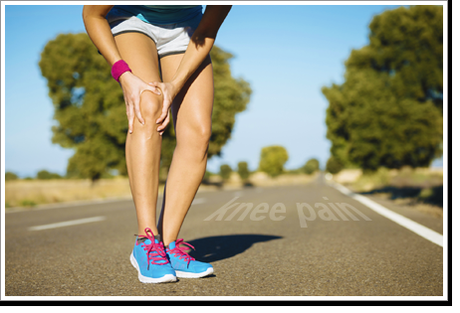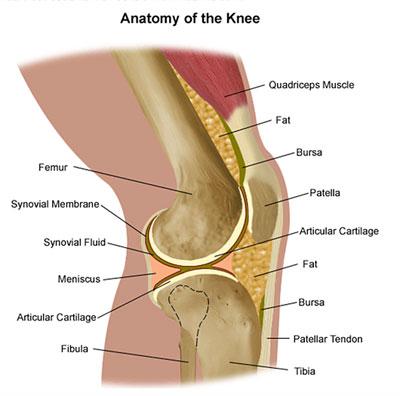 Anyone who has ever experienced knee pain knows how much if affects everything we do, from simple tasks such as sitting and walking, to more complex ones such as completing an obstacle course. Although incredibly complex and sturdy, the knee is more prone to injury than any other bony structure in the body other than the spine. In fact, there are actually many different causes of knee pain. These different causes of knee pain result in slightly different kinds of pain that can require very different types of treatment.
Anyone who has ever experienced knee pain knows how much if affects everything we do, from simple tasks such as sitting and walking, to more complex ones such as completing an obstacle course. Although incredibly complex and sturdy, the knee is more prone to injury than any other bony structure in the body other than the spine. In fact, there are actually many different causes of knee pain. These different causes of knee pain result in slightly different kinds of pain that can require very different types of treatment.
The two most common causes of a meniscus tear are due to traumatic injury (often seen in athletes) and degenerative processes (seen in older patients who have more brittle cartilage). The most common mechanism of a traumatic meniscus tear occurs when the knee joint is bent and the knee is then twisted. It is not uncommon for the meniscus tear to occur along with injuries to the anterior cruciate ligament (ACL) and the medial collateral ligament (MCL).
The ACL is located inside the knee joint and stabilizes the joint by preventing the shin-bone (tibia) from sliding forward beneath the thighbone (femur). A hard twist or excessive pressure on the ACL can tear it, so that the knee gives out and can no longer support the body.
These three problems occurring together are known as the “unhappy triad” which is seen in sports such as football when the player is hit on the outside of the knee. Through customized treatments, we have been able to provide effective care that that addresses the ACL, MCL and torn meniscus.
Iliotibial band syndrome (ITBS or IT Band Syndrome)), otherwise known as Runner’s Knee, can be described as outside (lateral) knee pain that is made worse by any lower limb activities, most notably running and cycling. The iliotibial band is a long thickened sheet of fascia that starts at the hip and extends to the knee. This band of fascia connects the tensor fascia lata and gluteus maximus muscles to the thigh and knee. The iliotibial band gives support to the outside of the knee and patella.
Iliotibial Band Syndrome is the most common cause of knee pain in runners, by some estimates accounting for 12% of all running-related injuries. Treatment depends on the stage at which the ITB syndrome is found at the time of examination.

The pes anserine bursa is a small, fluid-filled sac located 2–3 inches below the inner side of the knee. It lies beneath 3 tendons of the hamstring muscle, and it prevents the tendons from rubbing on the shinbone of the lower leg. Bursitis means the bursa has become irritated and inflamed, and this condition is usually painful. Certain positions, motions, or disease processes can cause constant friction or stress on the bursa, leading to the development of bursitis. Inflammation of the pes anserine bursae or tendons usually develops due to overuse, trauma, or degradation.
It is important to treat bursitis in the early stages to reduce the symptoms, minimize damage and maintain motion and strength in your knee.
Patellofemoral Pain Syndrome
Patellofemoral Pain Syndrome, also called Anterior Knee Pain Syndrome, is caused by imbalances in the forces controlling patellar tracking during knee flexion and extension, particularly with overloading of the joint. Risk factors include overuse, trauma, muscle dysfunction, tight lateral restraints, patellar hypermobility, and poor quadriceps flexibility. A patient with Patellofemoral Pain Syndrome will usually experience medial knee pain, with pain occurring with activities such as prolonged sitting with a flexed knee, walking up stairs, or running. . PFPS may account for 11% of musculoskeletal pain complaints and up to 25% of all injuries in runners.
We can help you identify the areas of your lower body that are tight, tender, weak and deconditioned to determine the exact cause of your pain.
Osgood-Schlatter Disease
Osgood-Schlatter Disease is one of the common causes of knee pain in active adolescents who play sports such as football, basketball, gymnastics and volleyball. This condition is caused by repetitive stress or tension on the upper tibia. The patellar tendon and surrounding soft tissues at the point where the tendon attaches to the tibia can become inflammed. Pre-adolescent boys involved in sports that include frequent running or jumping are particularly prone to this.
Since Osgood-Schlatter Disease is caused by biomechanical factors, it will usually respond rapidly to appropriate conservative care.
Knee Injury Specialist in Augusta GA
The knee is a complex joint that relies heavily on ligaments and muscles for stability. When pain is perceived as coming from the knee, all the anatomical components need to be examined, and in addition to the knee joint, the low back, pelvis, hip, ankle and foot need to be examined due to the direct influence they have on the knee, and vice versa.
For example, in addition to problems in the knee muscles, knee injury can also be linked to problems at the adjacent joints, such as the foot, hip, and pelvis. This is because the knee is directly connected to these structures through the tibia and femur, as well as the surrounding muscles.
As experienced Augusta GA Chiropractors at Georgia Clinic of Chiropractic we have great success in treating patients with a variety of knee conditions, and we are also one of the few clinics in the Augusta GA area able to customize your treatment with cold laser, if necessary.
Cold Laser Therapy uses red and infrared light for the relief of pain, to accelerate the healing and decrease inflammation. When the light source is placed against the skin, the photons penetrate several centimeters and get absorbed by the mitochondria, the energy producing part of the cell. This energy fuels many positive physiological responses resulting in the restoration of normal cell morphology and function.
- Stimulates Healing and Repair of Tissue
- Increases Tissue Strength
- Reduces Pain
- Reduces Swelling/Inflammation
- Promotes faster healing
- Stimulates nerve function
You can schedule a complimentary consultation with our office to find out if our customized treatments are the right fit for your knee condition.
The Georgia Clinic of Chiropractic Blog is written by Dr. Mark Huntsman.
Augusta GA Chiropractors Georgia Clinic of Chiropractic provides customized care. Visit our main website at www.georgia-clinic.com for a chiropractor in Augusta GA and a chiropractor in Evans GA that provides customized treatments.
You can schedule your appointment by calling our friendly staff at (706) 814-5053 or use our online form
